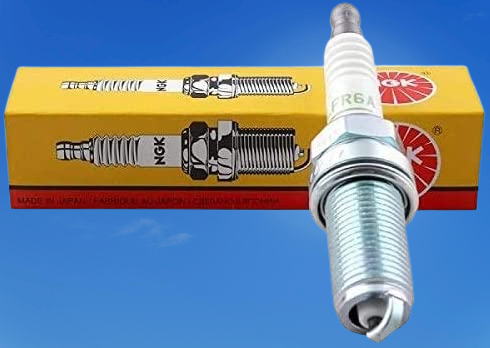If you have a jet ski or are considering buying a new or used personal watercraft, you need to know some of the typical reasons why your jet ski won’t start and how to fix them.
To get you back in action before the riding season, we’ll go through some most common reasons why your jet ski won’t start and provide you with a summarized troubleshooting checklist.
Reasons Why Your Jet Ski Won’t Start?
There could be several reasons why your jet ski won’t start. The most apparent reasons are mentioned here.
- Weak Or Dead Battery
- Issues of Start Relay
- Problem with Starter Motor
- Damage to Spark Plug
- Pump Clogged
- Bad Fuel/No Fuel
1. Weak or Dead Battery
There’s a fair probability that your Ski’s battery is dead or doesn’t have enough power to get you started.
How to know?
- If there is no response when you turn the key or press the start button, such as the display lighting up or a beep, the battery may be dead and need to be replaced.
- It should always be in this condition, even if you repeatedly turn the key on and off.
- Even if the screen is functional, the battery is dead if the PWC won’t start and instead produces a clicking or beeping noise.
- After repeatedly twisting the key and turning the Ski on and off, the ignition finally worked.
- If so, check for a loose wire or make sure the battery cable is securely fastened. It’s also possible that the battery has a dead cell, especially if it’s an older model, so having a professional check it out is a good idea. You can get a free battery check at most auto parts retailers.
- Even if you know the secret to getting your jet ski to start by tapping and shaking it, this indicates a mechanical problem.

How to Fix?
Personal watercraft are different, so it’s essential to read the owner’s instructions before getting in the water. Finding your battery’s location is your first order of business. Some are more approachable than others.
These vessels can produce a lot of power because of the battery and technology that powers them. A professional should inspect your PWC unless you have experience working with electronics.
In most cases, a snug connection between the battery cables is required. You should slid-of the caps of the terminal. Make sure they’re as tightly fastened as possible by using a screwdriver of sufficient size.
A little layer of battery oil applied to the cable ends will keep the bottom from rusting. Follow these steps, then give the Ski another go at starting. Try a battery booster with a modest power output if something else is needed.
It’s compact, has a watertight cover that you can store away, and will be a lifesaver if your battery dies when you are miles from the next launch ramp, port, or residence.
If you’ve already tried a jump start and been riding for a while without success, you can try turning off the engine, waiting a few seconds, and starting it again. You should purchase a new battery if the old one is not charging.
You can buy new batteries from here.
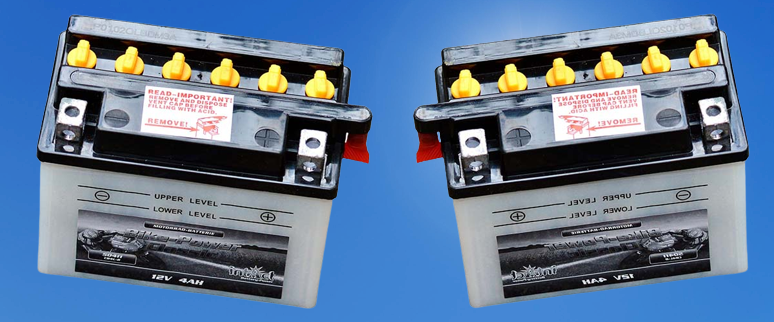
2. Issue of Starter Relay
The failure of the starter relay or starter solenoid, which is responsible for transferring power from the battery to the starter, could cause your Jet Ski’s inability to start.
How to know?
If you’re one of the many Jet Ski owners who’s had to push the starter button repeatedly before the watercraft comes on, it’s an indication that your starter relay is failing.
However, once you turn on your skis and hear a click or thud, there’s no turning back.
Starter relay problems are easily distinguished from battery problems because the latter causes a persistent clicking noise while the former only produces a single click before going silent.
How to Fix It?
Let the pros do this if you have extensive knowledge of your PWC.
Though changing a car’s starter relay is a simple task in and of itself, the relay’s location can be tricky on some models, making replacement challenging for the inexperienced technician.
If you plan on doing the replacement yourself, it’s recommended that you get the starter solenoid from a reliable local dealer. You may also get it online, but ensure you obtain genuine components.
Lower-priced components may perform well but only last for a while.
Depending on your current make and model, getting a new PWC can be easier than you think. Make sure the battery is removed before proceeding further.
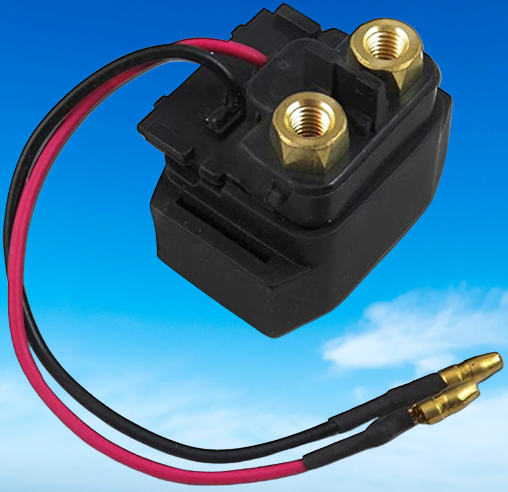
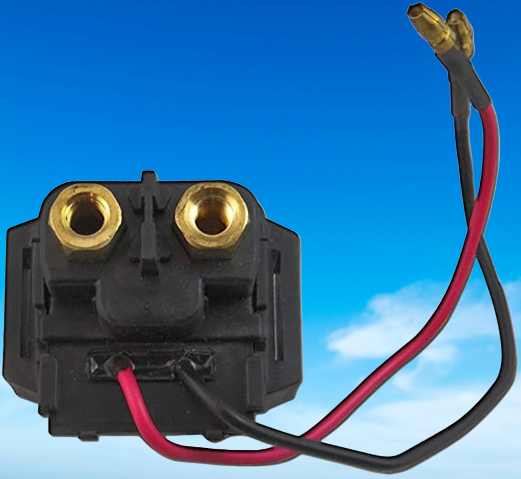
3. Damage to Spark Plugs
Gas and oil mixed in a jet ski can damage the spark plugs differently. It is because jet skis and other personal watercraft (PWCs) are often used in harsh conditions, like on the water and in the sun.
It is best to follow the instructions in the owner’s manual when changing the spark plugs.
How to know?
Spark plugs on a PWC will eventually wear out due to regular use. It is advised to replace the spark plugs once every 25–30 hours of operation or twice yearly at the very least.
How to Fix It?
Here are the steps you need to take to replace spark plugs: Lift the plug off by loosening the plug and using the ignition coil. When putting in a new spark plug, you should use an anti-seize lubricant like Loctite 767 to keep the plug from getting stuck.
Make sure to use fresh plugs and not over-tighten them tight enough while replacing them. Once the plug makes contact, you should turn it a quarter of a turn.
4. Problem with Starter Motor
If the battery and starter relay tests pass, the starting motor will likely be at fault.
How to know?
The starting motor might be dead if the screen is functional, the battery is fully charged, and a noise like a wheel rotating is heard.
Seeking professional confirmation of the issue is recommended. A click or thud might also indicate the same problem.
How to Fix It?
It is something that, depending on your watercraft model, is best handled by an expert. Take note of the following procedures if you are confident in your ability to handle this on your own.
Again, if you want to do this at home, you should read the instructions first.
Typically, the first step is to remove the seat and intake silencer. Some models need the engine removed, which is not a job for a mechanic who has yet to do it before.
First, disconnect the starting motor’s positive line from the battery, followed by the negative terminal.
When the starting motor doesn’t budge after removing the holding screws, wiggle it gently until it drops out. Make sure all contact points are clean before installing the new starting motor.
It would be best if you used Isoflex to lubricate the new motor’s O-rings (a lubricating substance).
Reinstall the new starting motor in the same manner that the old one was taken apart, using the retaining screws, and tightening them to the levels specified in the user manual.
Connect the starter motor cables carefully, followed by the battery cables, and you should be ready to go.
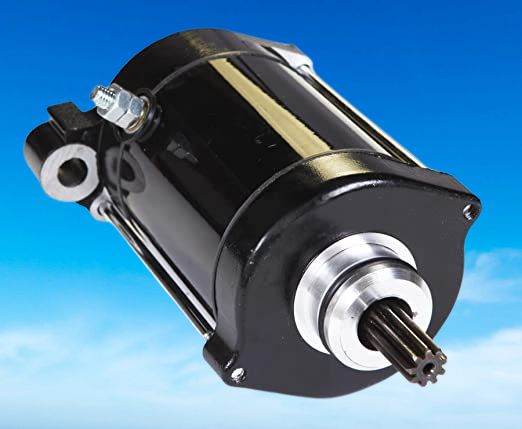
5. Check if the Pump is clogged.
Given that nobody uses a PWC in a pool, it’s likely that your Ski will draw in trash from the surrounding water at some point.
It occurs if there is an abrupt decrease in water pressure. When anything blocks the PWC’s impeller flow and causes it to slow down, this is what usually happens.
Jet skis have direct drives. Therefore, if the Pump becomes clogged, the engine won’t start. Rope, seaweed, boulders, timber, and fishing lines are frequent examples of these items.
How to know?
Rapid deceleration, a great deal of vibration, a clunking sound from the rear of the engine, and smoke coming from your Jet Ski are all signs that something has been lodged in the Pump. You are immediately turning off the Ski.
If there is anything in the Pump, the jet ski’s engine will try to move, and the whole thing will vibrate.
Because of this, the engine could be difficult to start. The jet ski can only travel very slowly because something is jammed in the Pump. The jet ski may be difficult to start if the battery is dead.
How to Fix it?
Please remove the battery before doing any pump maintenance.
If you can, steer clear of shallow or debris-filled places, but if you can’t avoid them, go as quickly as possible.
However, if you see cavitation or other indicators, you should shut off the engine and be ready to swim.
Take the lock’s key and jump in. Draw near the jet ski’s rear and remove anything stuck in the intake. Take your time and attempt to draw it out in one piece to prevent damaging the interior. Avoid cutting yourself on any sharp items. Be careful and take your time.
Even if there are no obstructions to the intake, vibration and cavitation may still occur. Although you may not be able to see anything solid in the input after swimming to your PWC, you should still check for a blockage.
Stop using the motor and get hauled to safety. You may sling it onto a trailer or roll it onto its side. Check the space between the prop and the wear ring for debris that may have been stuck.
Whenever your jet ski consumes foreign things like pebbles or wood, you should expect to have to replace the worn ring.
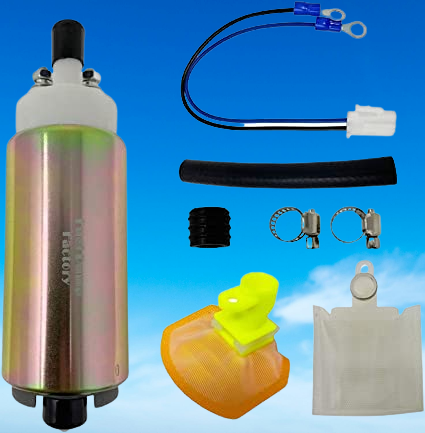
6. Bad Fuel/No Fuel
Water can enter your gas tank at the gas station, but it most often enters it naturally due to rain. A leaky gas cap or gas jugs exposed to moisture could be to blame.
How to know?
The PWC should be turned on once a month for one minute. Because of this, the fuel will be recirculated via the injectors. In a terrible state, gasoline will turn into jelly. Injectors and carburetors will be damaged if this gets inside.
Starter fluid can also be squirted into the throttle body’s air intake hole. You have a problem with the gasoline if the Jet-ski starts when you use starter fluid.
How To fix it?
A lot of jet skis only get utilized for up to six months. Fill the tank with gas and add a fuel stabilizer towards the end of the season. Start the Jet ski and let it run for a while so fresh gasoline may enter the injector rail. Because of this, you can use gasoline for a more extended period.
If the gas has gone wrong or been tainted, you should replace it with fresh fuel.
Some Tools for Repairing Jet Ski yourself
Here is a list of some tools or equipment you should keep in your compartment of a jet ski. These tools will help you in repairing jet skis yourself.
- Sharp lengthy knife
- 3/8 Drive socket set
- Shifter or wrench
- Screwdriver
- Torch
- 40cm long metal bending rod
- Tow rope and shackle
- Suaoki Pocket Jump Starter
- Anchor and rope
- Water and spare life jacket.
- Fire extinguisher
To check how to winterize the jet ski and which tools are required to winterize the jet ski, click here.

Final Thoughts-Reasons why your jet ski won’t start
As you can observe, there could be several reasons your jet ski would not start. Mostly it is because of battery issues or spark plugs. Fortunately, most of the problems you can resolve by yourself. But sometimes, further investigations are required.
It is an excellent feeling to repair your PWC yourself. It saves you money from the mechanic, and you learn skills to fix things yourself.
But if your jet ski has a significant engine or electrical problems, it’s highly recommended that you take it to a reputable service shop for an inspection.

